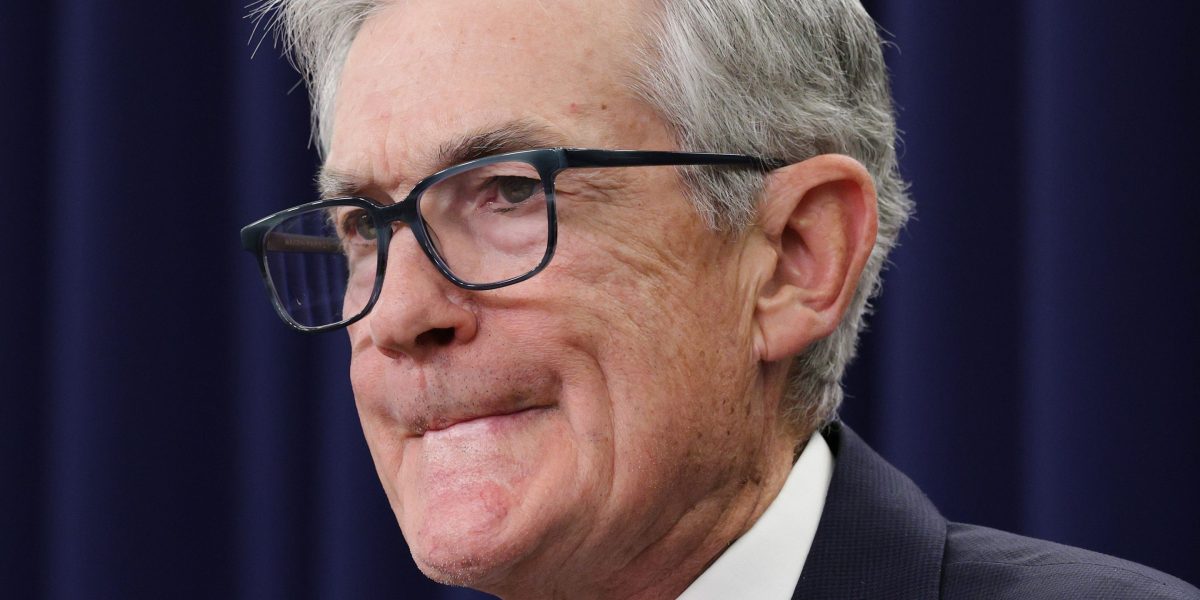K-shaped economy and ‘collective holding of breath’ about the AI bubble both appear in Fed’s temperature check
The latest “Beige Book” describes a widening gap between America’s social classes, with “early signs of strain on middle-income consumers.”


The Federal Reserve’s latest Beige Book shows a sharply diverging U.S. economy, where affluent households continue to spend while lower- and middle-income consumers begin to buckle under financial pressure: the clearest sign yet that the economy is splitting into something unmistakably K-shaped.
The Fed’s latest report describes a widening gap between America’s social classes, with “early signs of strain on middle-income consumers.”
On the lower end, households are cutting back on dining out, trading down to cheaper groceries, getting “sticker shock” from car prices, and responding more sharply to price increases. Retailers across several Fed districts noted that budget-conscious shoppers have become increasingly sensitive to small changes in prices or promotions. Fast-food chains also saw a “notable decline in sales” as lower-income diners pulled back.
At the top of the income distribution, the picture looks very different. High-income households — those who benefit most directly from asset appreciation — continue to spend robustly. Travel bookings remain strong, discretionary purchases are holding up, and “higher-end retail spending remained resilient.”
The anecdotal evidence from different industry leaders echoes what has been clearly showing up in the data. Mark Zandi, chief economist at Moody’s Analytics, found that the top 10% of households now account for roughly half of all U.S. consumer spending — an unprecedented concentration that makes the economy look healthier on the aggregate than it feels to most people living in it.
However, much of the resilience among high-income consumers is being supported — indirectly but powerfully — by the explosive run-up in AI-related stocks.Nvidia, Microsoft, Amazon, and the broader data-center ecosystem have driven a market rally so strong that it’s materially lifting household balance sheets for the wealthiest Americans.
Albert Edwards, the self-described “perma bear” who offers the “alternative view” as global strategist for Société Générale, recently told Fortune that he was convinced of bubble-like conditions in markets, but that’s nothing new for him. “I think there’s a bubble but there again I always think there’s a bubble,” Edwards told Bloomberg in a recent podcast appearance, and he explained to Fortune that the inequality aspect makes it different.
“What’s more worrying about the AI bubble,” Edwards said, “is how much more dependent the economy is on this theme, not just for the business investments, which is driving growth,” but also the fact that consumption growth is being dominated so much by the wealthiest cohort. He added that the wealth of this cohort, “inflated by the stock market,” is a major concern and in the case of a big stock-market correction, this wealth and therefore the economy would be “hit very, very badly indeed.”
In multiple districts, Fed contacts reported to the Beige Book a noticeable sense of caution around that boom. Manufacturers described the moment as a “collective holding of breath,” worried that AI spending might be running ahead of underlying demand.
That creates an unusual dynamic: the very households holding up consumer spending are the same ones most exposed to any possible AI-driven market correction, as markets have recently feared. If the AI boom slows, whether because of financing constraints, energy bottlenecks, or shifting corporate sentiment, the top of the “K” could weaken quickly. And because that top now drives such a large share of consumption, the overall economy would feel it almost immediately. AI-driven spending now accounts for half of GDP growth, which is why the AI and crypto czar of President Donald Trump’s administration, David Sacks, said on X that “We can’t afford to go backwards.”






